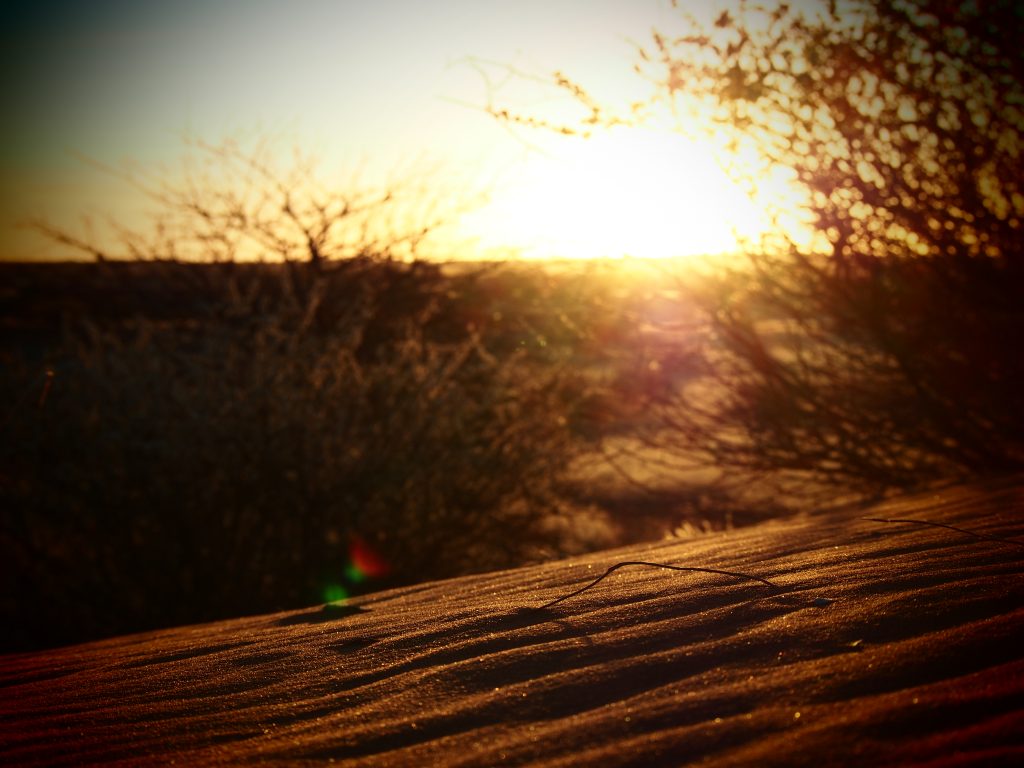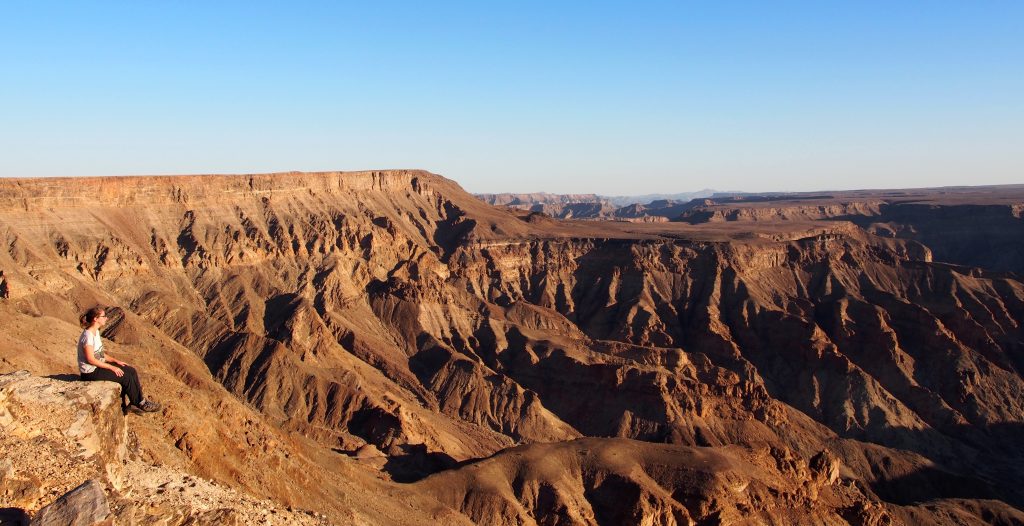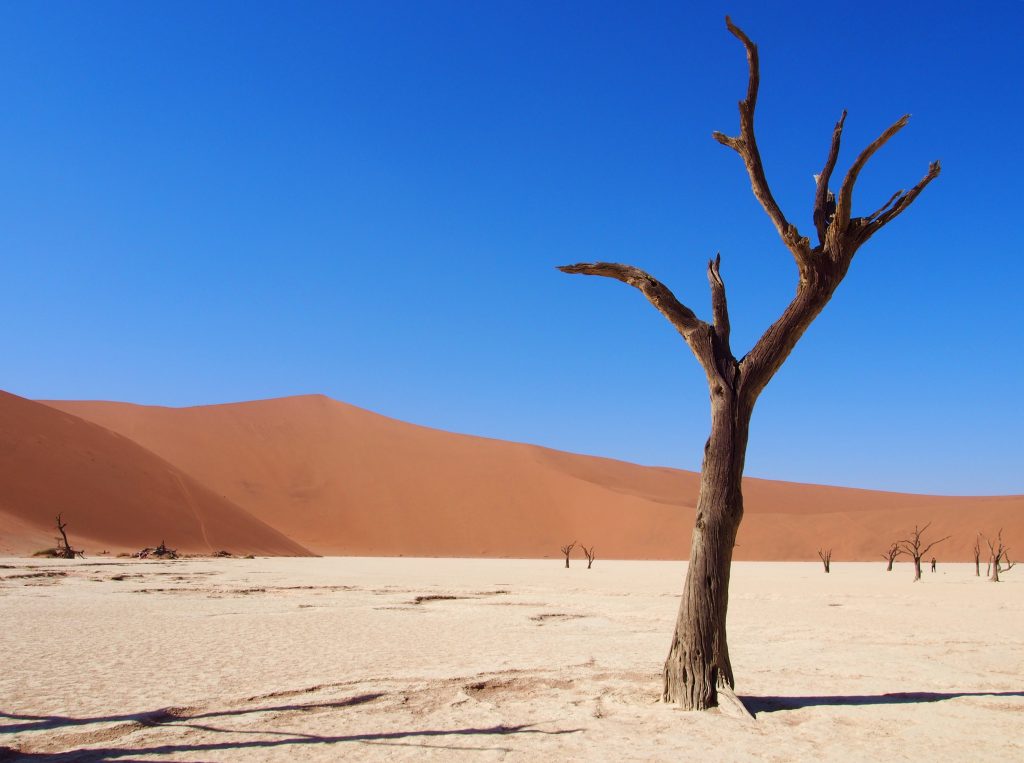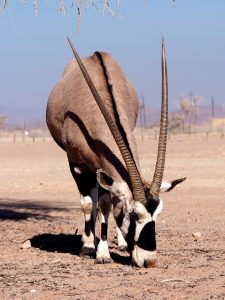 Since my first trip to Africa, a visit to Namibia has been at the top of my wish list. In August as a birthday present to myself I booked a Namibian adventure. With this adventure having time constraints I booked a tour with Wild Dog Safaris, the 14 Day Namibian Adventure.
Since my first trip to Africa, a visit to Namibia has been at the top of my wish list. In August as a birthday present to myself I booked a Namibian adventure. With this adventure having time constraints I booked a tour with Wild Dog Safaris, the 14 Day Namibian Adventure.
The reason for my choosing this particular tour was to see Kolmanskop, Deadvlei and Etosha National Park. Kolmanskop is quite a detour from the standard route, so it is not included in many of the Namibian tours.
I always book with TourRadar because I earn travel credits; do the same and sign up with my referral link.
Namibia
Namibia is on the west coast of Africa, directly above South Africa. It’s currency, the Namibian Dollar, is equivalent to the South African Rand and within Namibia the currencies can be used interchangeably.
Namibia has a population of around 2.2 million living with a land size of approximately 825,000 square kilometers. According to wikipedia it is the second least densely populated country in the world with roughly 2.7 inhabitants per square kilometer.
The mineral rich earth of Namibia led the main industry to be mining; diamonds, copper, tin, gold, zinc etc.
The traditional peoples of Namibia include the Damara, Nama, San, Himba, Herero, Kavango, Ovambo, Basters, Tswana and Caprivians; each with their own languages, culture and traditions. However, as is the case with so many nations, Namibia was occupied by white Germans for some time, followed by white Afrikaners. Afrikaans, English and German are the common languages you will hear.
7 Day Southern Swing
On starting the tour I discovered that the 14 day tour was actually two tours combined, the 7 day Southern Swing and the 7 Day Northern Adventure. Both tours looped the south/north region respectively, starting and finishing in Windhoek.
Windhoek
Windhoek is the biggest city within Namibia, and unsurprisingly also the capital city, with a population of 250,000. I spent very little time in Windhoek, and was quite happy about that as it seems to be just another city.
For me the best part of Windhoek was a visit to Joe’s Beer House for a meal. It is a spectacular themed pub/restaurant with a wide range of beer and food. The highlight was the game meat on offer! I ordered the Bushman Sosatie which offered a selection of Zebra, Kudu, Springbok, Gemsbok and Crocodile (on this occasion they were out of crocodile and it was replaced with pork). It was delicious, if you visit Windhoek, you must eat at Joe’s!
Bagatelle
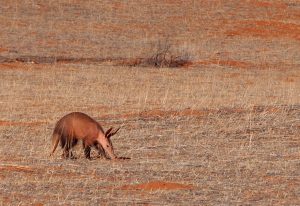 Bagatelle is a game ranch in the Kalahari desert. A visit involves driving through rolling plains of yellow-grey, low dry grass broken by intermittent raised ribs of mostly bare glowing ochre dunes.
Bagatelle is a game ranch in the Kalahari desert. A visit involves driving through rolling plains of yellow-grey, low dry grass broken by intermittent raised ribs of mostly bare glowing ochre dunes.
The ranch is 10,000 hectares with accommodation and camping spots on offer, protected against the animals in the area. Through the fenced boundary of the accommodation it is possible to go on a game drive to see the many animals protected within the fences of the ranch.
In our one hour game drive our local guide David showed us the huge weaver bird nests that appear as matting in the tree branches. We saw an Ostrich sitting on it’s next of eggs. We found an aardvark happily and busily digging in the ground for ants. We also saw Oryx, Springbok, Blue Wildebeest, Giraffe, a Cape Fox, Yellow Mongoose and Meerkats.
To conclude a wonderful evening game drive, we stopped atop a dune to enjoy a sundowner cider and watch as the sky changed through the shades of red into darkness.
Mesosaurus fossil farm
Our second visit on the tour was to a Mesosaurus Fossil Farm, owned and managed by a man by the name of Gil. Gil explained to us how he had come across the fossils on his property and how research began on what was found.
The Mesosaurus is a small crocodile type creature, 35-100cm in length. It had teeth which were long, but weak, that were used to filter food out of the water similar to the method used by many whales. The fossils contain only the prints of these animals, as it is thought that the water had a high acid contain, dissolving the bones. The mesosaurus is estimated to have lived in the region 270 million years ago; the findings support the idea of Gondwana (one large continent) as the mesosaurus fossils found in Namibia are the same as fossils found in South America.
While the fossils were fascinating, they were not my favourite part of the visit. What I found more interesting were the towers of rocks and the quiver trees.
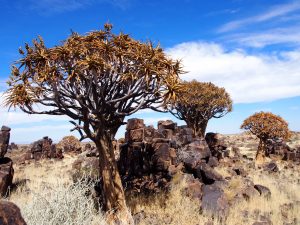 Around the area were what appeared to be towers built of rock cubes, all neatly stacked. This volcanic area had experienced periods where the magma bubbled up through the ground and formed pinnacles of Dolomite rock. In the desert one experiences a huge variation in temperatures, hot through the day and often below freezing at night. The extreme changes between hot and cold caused the rocks to crack, splitting vertically and horizontally, forming these towers of cubes.
Around the area were what appeared to be towers built of rock cubes, all neatly stacked. This volcanic area had experienced periods where the magma bubbled up through the ground and formed pinnacles of Dolomite rock. In the desert one experiences a huge variation in temperatures, hot through the day and often below freezing at night. The extreme changes between hot and cold caused the rocks to crack, splitting vertically and horizontally, forming these towers of cubes.
The quiver trees around the property had a papery yellow-white bark, and am umbrella of interestingly angular branches with structured spiky leaves. People used to hollow out a branch and create a quiver for their bows; though I am unsure what kind of relation the ‘quiver’ tree has to the term ‘quiver’ for arrows, originally.
I found the rock cube towers and sharp lines of the quiver trees to be quite beautiful to look at.
Fish River Canyon
Fish River Canyon is a spectacular spot to visit. It is the second largest canyon in the world, created by water erosion 500 million years ago. The canyon is 27 kilometres wide, 160kilometres long and 550 metres deep. The size and depth of this canyon is truly a wonder to behold.
We arrived at the canyon before sunset to enjoy a stroll around the rim as the sun bathed the canyon in golden light.
The canyon used to be a popular hiking spot, but due to many injuries the canyon hiking has been restricted. A multi-day hike is still an option for groups of three or more in the winter time, but there is an application process to follow. Reservations can be made via Namibia Wildlife Resorts (NWR); several sites on the internet claim bookings need to be made a year in advance.
Lüderitz
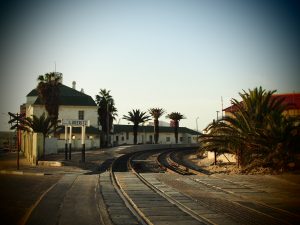 Lüderitz is a coastal town named after it’s founder, German national Adolf Lüderitz. It’s a quirky town that is several decades behind the times with colonial architecture and Art Nouveau designs. Many of the city’s signs and street names are still in German.
Lüderitz is a coastal town named after it’s founder, German national Adolf Lüderitz. It’s a quirky town that is several decades behind the times with colonial architecture and Art Nouveau designs. Many of the city’s signs and street names are still in German.
It appears to function primarily as a fishing village and gateway to the popular tourist destination of Kolmanskop.
Kolmanskop
Kolmanskop was named after a transport driver by the name of Johnny Coleman, who was once lost in a sandstorm and abandoned his vehicle opposite a small settlement.
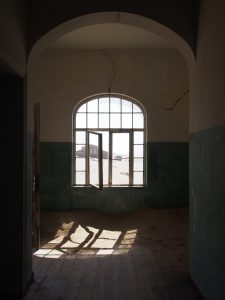 In the settlement lived a railway supervisor August Stauch. In 1908 one of the railway workers showed him a stone he had found in the sand, and when it was determined to be a diamond the settlement quickly became a secured diamond mining town.
In the settlement lived a railway supervisor August Stauch. In 1908 one of the railway workers showed him a stone he had found in the sand, and when it was determined to be a diamond the settlement quickly became a secured diamond mining town.
The town housed 300 German adults, 44 German school aged children and around 800 Namibian workers. The Namibian workers each signed up for a two year contract, during which time they were not allowed to leave at all.
With mining being done manually and the high value of diamonds, smuggling was a major concern. People used several methods to try smuggle diamonds out of the area including, carrier pigeon, swallowing the diamonds and also cutting their skin and embedding the diamond under the skin. As a result, the hospital had the first x-ray machine in the country in order to scan bodies for diamonds, as opposed to broken bones.
When the Namibian workers came to the end of their contract they were fed cod-liver oil and placed into quarantine for some time where the toilets had strainers to catch any diamonds that workers may have tried to smuggle before leaving.
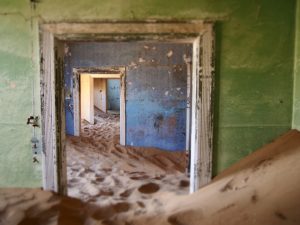 Mining at Kolmanskop continued from the early 1900s through to 1927 (aside from a break during World War I), when more extensive diamond deposits with found at Orange River. At this time the entire township packed up and left Kolmanskop.
Mining at Kolmanskop continued from the early 1900s through to 1927 (aside from a break during World War I), when more extensive diamond deposits with found at Orange River. At this time the entire township packed up and left Kolmanskop.
This deserted town has since been engulfed by the Namib desert and become a tourist attraction. For me, a visit to Kolmanskop was at the top of my Namibian “Must See” list.
This ghost town is spectacular to explore, eerie and stunning at the same time. On tour my time to explore was very limited, we had an hour tour and then a half hour to explore. If you have the time I’d highly recommend taking a few hours to wander at your leisure.
Sossusvlei
Sossusvlei is a salt and clay pan in the Namib-Naukluft National Park. It is technically one specific pan but the name is typically used to refer to the area and neighbouring vleis (marshes).
The Namib is one of the oldest deserts in the world, it’s sand is grey and weighty, but the lighter, orange sand from the Kalahari desert has blown in from across the land over a period of 80 million years to build up the huge orange dunes found in the Sossusvlei.
The region is a popular tourist destination for the sand dunes and Deadvlei.
We started our visit to Sossusvlei with a sunrise hike up Dune 45. Dune 45 is over 170 metres high and is located at the 45th kilometre of the road from the Sesriem Gate and the Sossusvlei.
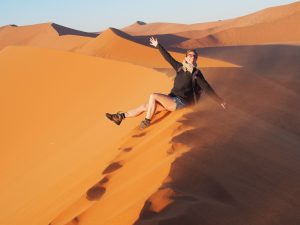
Early access to Sossusvlei is only available to visitors within the the main gated area, such as guests of Sossus Dune Lodge and the NWR campsite. These gates open an hour before sunrise, where the main gates open at sunrise. We were queued at the early entry gate 15 minutes prior to opening and once open we drove straight to Dune 45, where we were the first to start climbing the ridge of the dune to it’s peak for sunrise. The cold morning, high winds and ever shifting sand made for quite a challenging hike, which was 100% worth every bit of effort. The sunrise was stunning and the views spectacular.
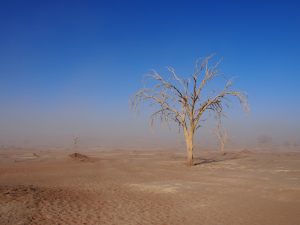
From Dune 45 it is a short drive to the access point for Deadvlei, from where you can hike in through the dunes for an hour or more; or pay for a short 4wd drive. On arrival we were hit by a sandstorm, which despite feeling unpleasant was actually rather beautiful. After our sunrise hike and with the sandstorm, we were all pretty interested in taking the 4wd option.
From the drop off point it is a 15 minute sand dune hike in to Deadvlei. Many years ago a river ran through the region, but after it dried up the trees began to die. The only surviving trees in the area are Camelthorn Acacia, which have very long roots and are capable of finding small traces of water. This is where the name Deadvlei came from.
Deadvlei is surrounded by large dunes on all sides including the popular to climb, Big Daddy. The sheltering dunes have protected the deadvlei and it’s trees, and the dead trees remain standing. The Deadvlei is a dry, cracked pale salt pan surface; with grey-brown dead trees sprouting out of this; set against glowing ochre sand dunes; and, in our case, crystal clear blue skies.
Deadvlei is an absolutely fascinating place to visit, and is visually spectacular, the colours and structures are truly beautiful.
Seisreim Canyon
The closing activity of our tour was a short visit to Sesriem Canyon, originally Seisreim canyon for it’s six rims. The canyon was formed 30 million years ago by water flows and is 3 kilometres long.
The canyon is home to many breeds of birds, and probably a large number of other animals species. We enjoyed a short walk through a section of the canyon before the sunset brought our final day to a peaceful close.
Food Costs
Food is Namibia is quite affordable. Most of my meals were included in the tour cost, but based on the few meals I paid for outside of the tour, I would say that breakfast averaged around NAD$70 (USD$5), a dinner between NAD$115 to $200 (USD$8 – $14) and lunch somewhere in between.
Accommodation
My pre and post tour accommodation was not included in the tour, and I booked an awesome glamping tent at Urban Camp through booking.com.
Airport Transfers
Airport transfers can be arranged through the tour company, the accommodation or online. I found that the tour company and accommodation both offered a one-way transfer for NAD$450, while booking only through city cabs was NAD$300.
Windhoek City Cabs weren’t responsive to the web form, but they were responsive to email, My pickup service was great!

